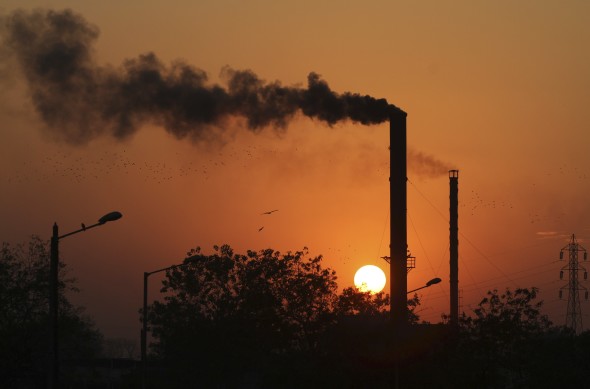2019 may be the hottest year yet due to El Niño and global warming
www.accuweather.com, 24th December 2019, By Amanda Schmidt
Climate scientists warn that 2019 may be the warmest year on record largely as the result of a possible El Niño event exacerbated by man-made global warming.
There is a 90 percent chance that El Niño will form and continue through the Northern Hemisphere winter of 2018-19 and a 60 percent chance that it will continue into the spring of 2019, according to the Climate Prediction Center at the National Oceanic and Atmospheric Administration (NOAA).
El Niño is a part of a routine climate pattern that occurs when sea-surface temperatures in the tropical Pacific Ocean rise to above-normal levels for an extended period of time. It can last anywhere from 4 to 16 months and it typically has a warming influence on the global temperature.

This is a Monday, Dec. 8, 2014 file photo of birds as they fly past at sun set as smoke emits from a chimney at a factory in Ahmadabad, India. Temperatures have risen almost 1 degree C (1.8 F) since humans started burning fossil fuels — the biggest source of greenhouse gases — on an industrial scale in the 19th century. (AP Photo/Ajit Solanki, File)
The opposite of El Niño, La Niña, is when sea-surface temperatures in the central Pacific drop to lower-than-normal levels.
These warm and cool phases are part of a recurring climate pattern that occurs across this section of the Pacific, known as the El Nino-Southern Oscillation (ENSO), according to the National Oceanic and Atmospheric Administration (NOAA).
The strong El Niño of late 2015 to early 2016 helped boost global temperatures to their warmest on record in 2016, according to AccuWeather Senior Meteorologist Brett Anderson.
“However, if there was no El Niño during that period, I still suspect that 2016 would have still ranked as the second warmest year on record globally due to the steady increase in greenhouse gases into the atmosphere, which trap heat closer to the surface,” Anderson said.
So far, 2018 is on pace to likely be the third warmest year on record, behind 2016 and 2017.
“What’s interesting is that 2018 started out under La Niña conditions, which usually has a cooling influence on global temperatures, but it was not nearly enough to cancel out the warming from the release of man-made greenhouse gases,” Anderson said.
However, since late April 2018, sea-surface temperatures across much of the east-central tropical Pacific returned to neutral levels following the La Niña of 2017-18, meaning neither La Niña or El Niño present.
